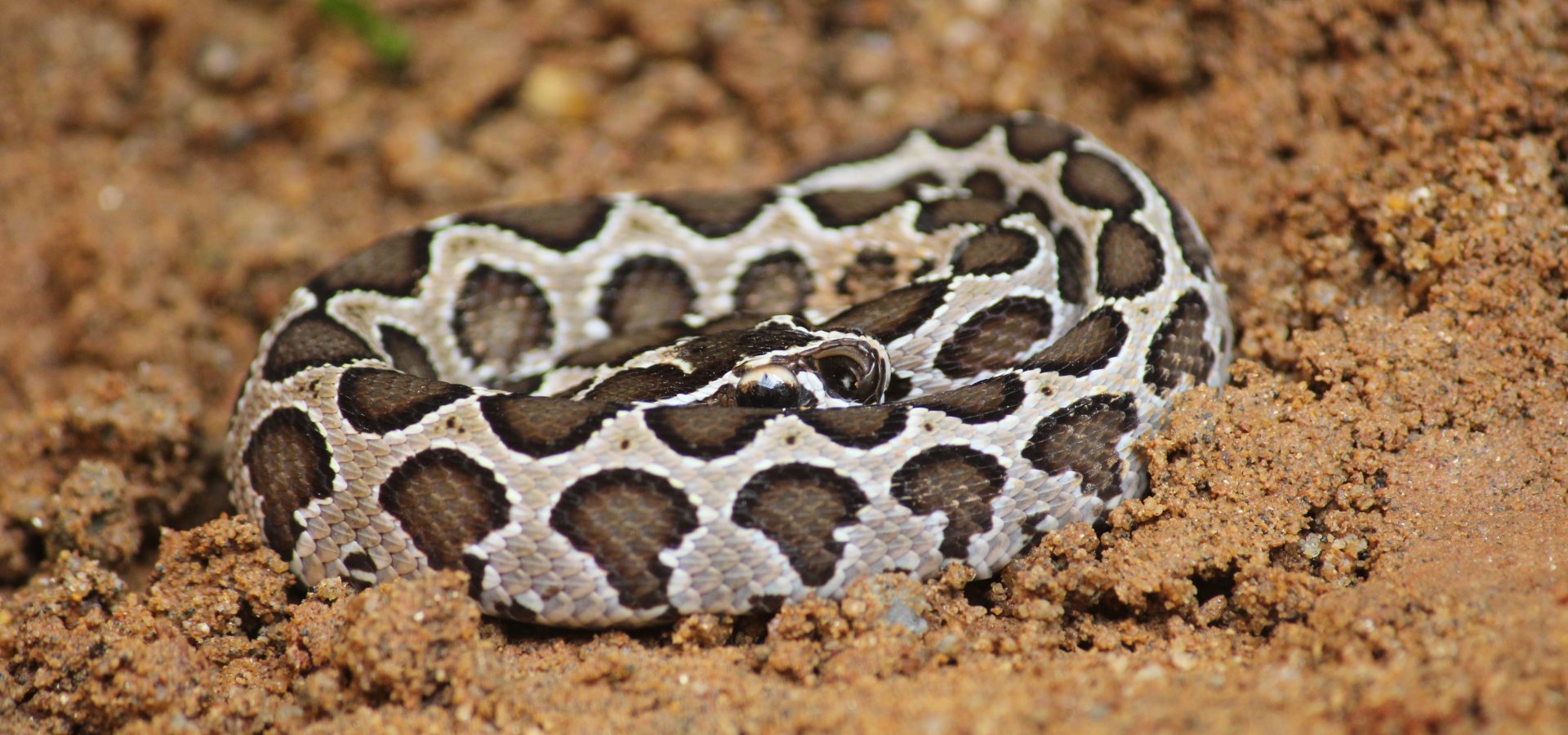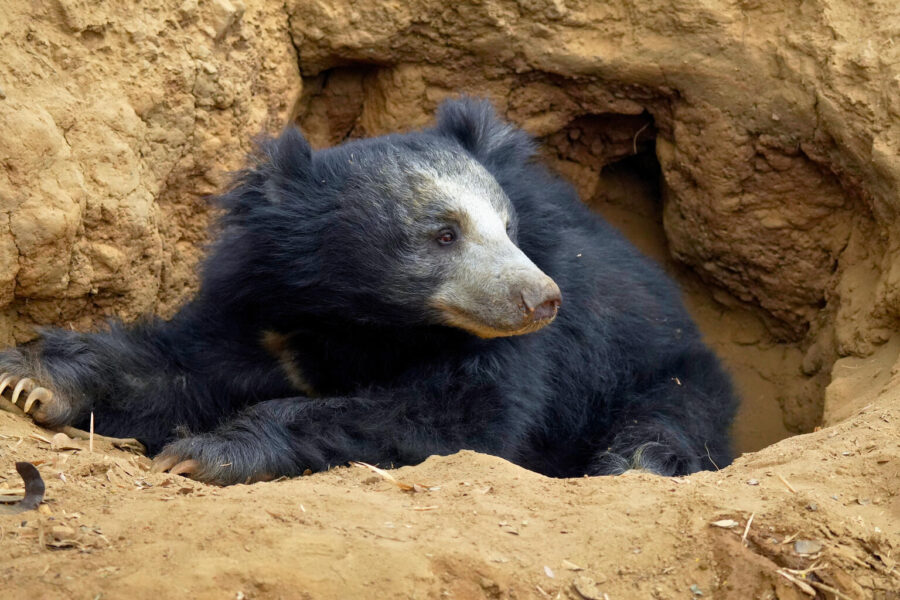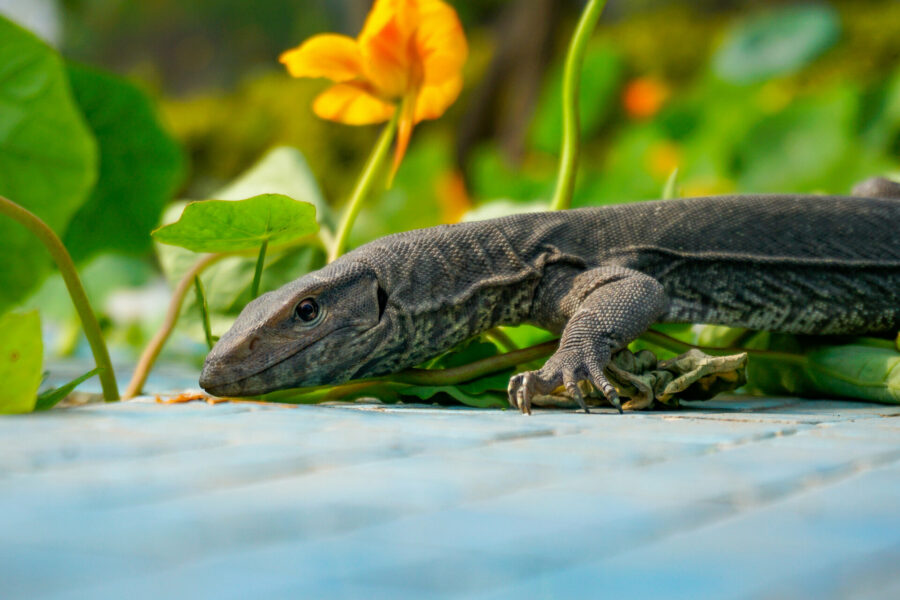With over 30 species inhabiting various habitats across India, vipers are one of the most dreaded snakes. From snow-capped mountains and scorching deserts, to dense rainforests and human-dominated fields, these venomous snakes occupy a variety of landscapes.
As members of the viperidae family, most of these snakes possess a common feature of long fangs, keeled scales, and slit-shaped pupils. The hollow, retractable, and rotatable fangs allow easy injection of venom into the prey. Vipers are also renowned for their skills as ambush predators, and heat-sensing pit organs enable many in this family to easily detect their prey.
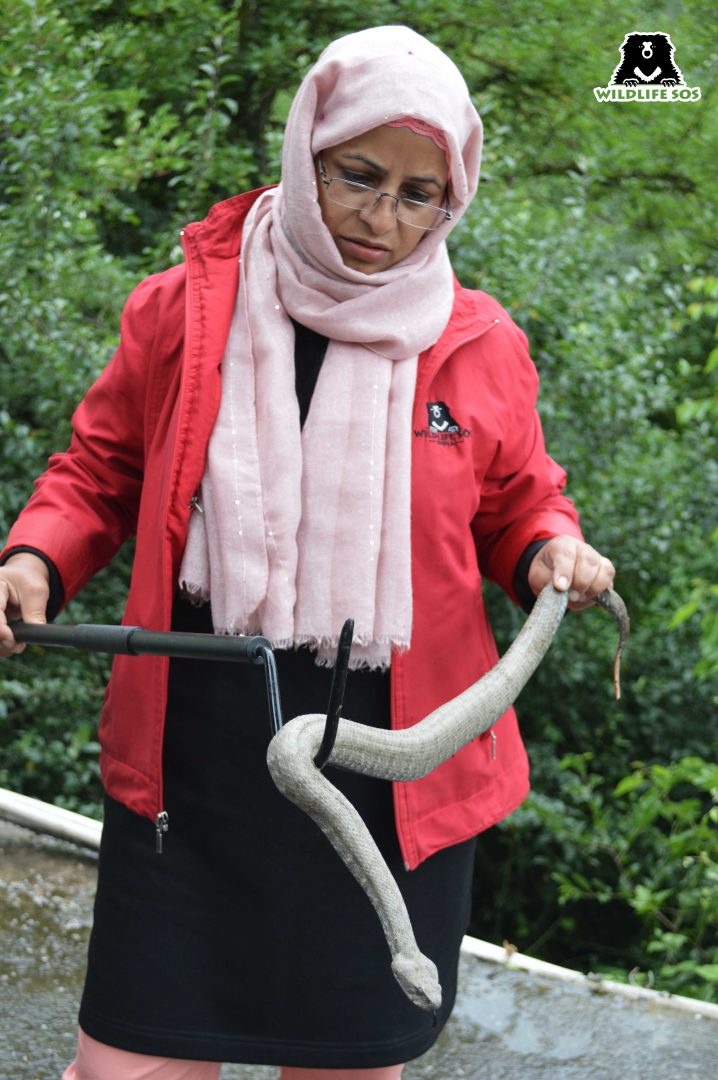
Let’s look at some of the viper species found in India.
Saw-scaled Viper
One of the ‘Big Four’ venomous snakes in India, the Saw-scaled viper (Echis carinatus) is named after its strongly keeled scales. When threatened, it aesthetically shapes itself into an ‘S’. When the snake’s scales rub against each other, a sound similar to a working saw machine is produced. This stridulation acts as a defensive alarm against potential predators. Saw-scaled vipers are comparatively smaller snakes with lengths ranging between 1 and 3 feet, but this in no way defines their ability to hunt prey!
With excellent camouflaging skills, this viper can bury itself in the sand and prey on lizards, frogs, rodents, and invertebrates. It is known to move in a sidewinding motion, which reduces friction on surfaces like sand. This unique movement enables one to identify this otherwise inconspicuous snake. The venom released by the viper is highly toxic since it can impede the process of blood clotting (haemotoxic) and also damage body cells and tissues (cytotoxic).
Malabar Pit Viper
Endemic to the Western Ghats, the Malabar pit viper (Craspedocephalus malabaricus) is identified by its triangular head, body shape, and its pit organs. One of the most unique and enigmatic characteristics of the snake is its ability to change body colours. Born as a brown snake, this viper can change itself to being green, blue, yellow, violet, and even crimson red! This helps the snake to blend into its environment, and become nearly indistinguishable while hunting and avoiding predators.
A nocturnal, ambush predator, the snake chooses to remain still as he waits for its prey to come nearer rather than actively chasing it. The highly developed heat-sensitive pits present between its eyes and nostrils helps the snake sense its prey. This snake is often seen curled in an S-shape on a twig, ready to strike its preferred prey animals like frogs, lizards, and young birds. The pit viper’s venom is both cytotoxic and haemotoxic: it causes tissue damage and impairment of the blood’s ability to coagulate. While the bite can be extremely painful and cause swelling in humans, it is rarely fatal.
Russell’s Viper
Russell’s viper (Daboia russelii) is also an infamous member of the ‘Big Four’ snakes of India. The genus name, Daboia in Hindi means ‘the lurker’, which refers to its ability to lie absolutely still until the need to strike the prey. Due to the yellowish-brown body colour and presence of dark blotches throughout, the snake is sometimes confused with the non-venomous Indian Rock python. The reptile generally feasts on rodents, birds, amphibians, and reptiles.
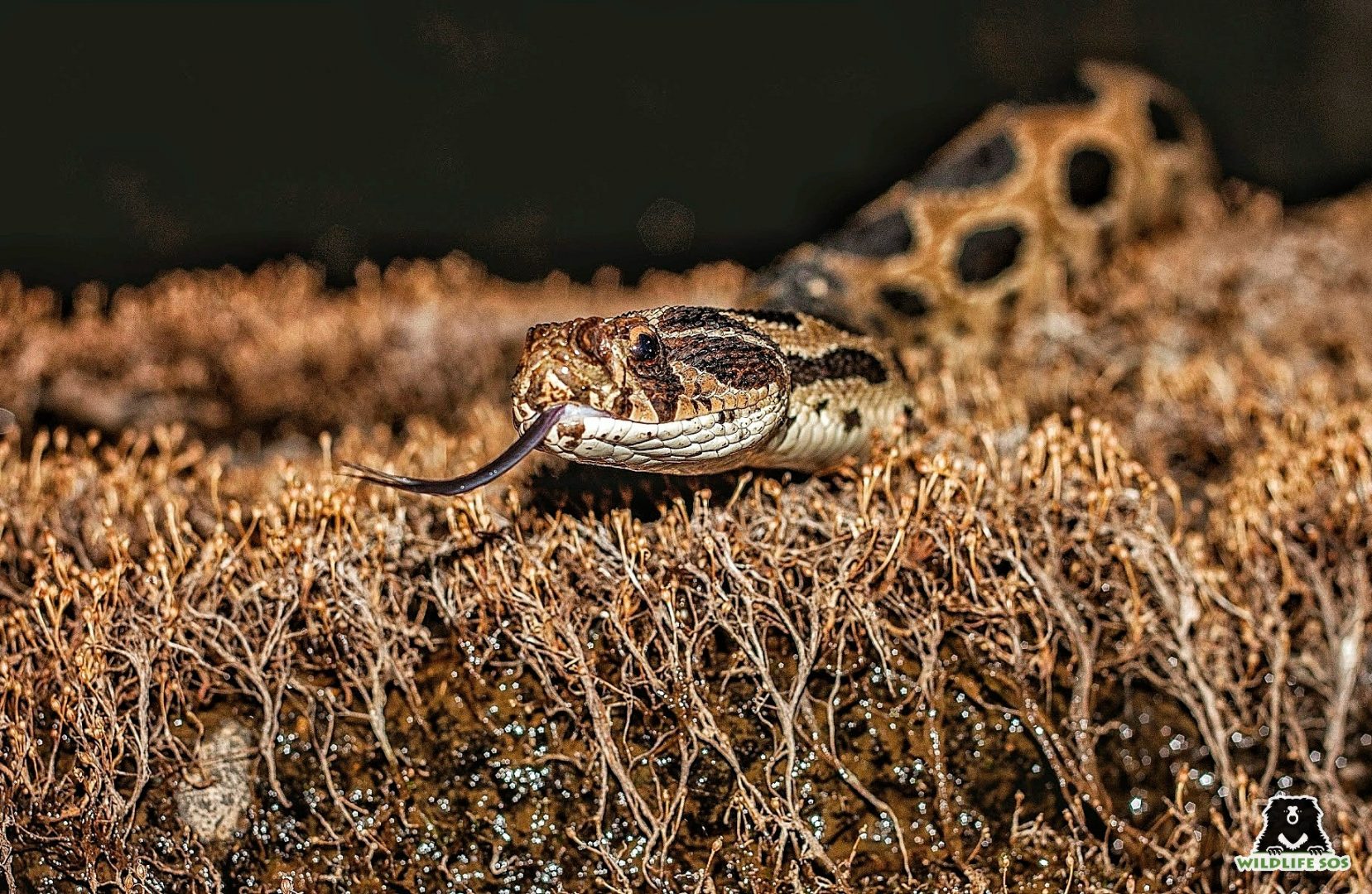
Highly venomous, the Russell’s viper expels venom which consists of a cocktail of toxins. It is injected into the prey’s body through its needle-like fangs. In humans, the venom can cause necrosis, which means the death of tissues in the body, and this makes the victim bleed profusely. Although capable of striking at a lightning fast speed, the snake is actually hesitant to bite and prefers to hide from or hiss at a potential threat instead. As a defensive posture, this almost 6-foot-long snake coils up in a circle, with its head in the centre. It hisses almost as loud as a pressure cooker!
Bamboo Pit Viper
An arboreal reptile, the Bamboo pit viper (Trimeresurus gramineus) prefers to inhabit dense vegetation in the forests of India. This venomous species is vivid green in colour and can be easily recognized by its trilateral head. Commonly found in Maharashtra, it is also spotted in other states of the peninsular region. The snake is named so due to its preference for bamboo groves, but is also seen on the ground and rocks near freshwater bodies. Nocturnal in nature, the viper can hunt efficiently due to the presence of pit organs between its eyes and nostril.
Its haemotoxic venom is adapted primarily to kill prey such as frogs, lizards, birds, and rodents. Although uncommon, its bites on humans can cause severe pain and localised swelling. Bamboo pit viper is known to vibrate its tail in response to a potential threat. The snake is frequently mistaken for the common Indian Green vine snake, which is only mildly venomous.
Levantine Viper
The Levantine viper (Macrovipera lebetina) also known as ‘Gunas’ in the local language, is a venomous snake inhabiting the regions of Jammu and Kashmir. These vipers can grow to be slightly over 5 feet in length. They generally feed on rodents, lizards, and birds. Though slow moving, the Levantine viper is capable of making fast strikes when provoked. It usually gives out a warning hiss before striking its prey. Its venom is haemotoxic, which adversely impacts the victim’s cardiovascular system. The snake bite may cause extreme pain, inflammation, and tissue damage at the site.
Our team operating out of Jammu and Kashmir frequently receives calls from locals to rescue Levantine vipers. Sometimes these snakes are spotted sunbathing in the backyard of houses and in other instances, they are found taking refuge in the mess of government offices! With requisite equipment and protective gear, the rescuers employ extreme stealth and caution while extracting these snakes. Rescued reptiles are kept under medical observation and released back into their natural habitat once they are deemed fit by our veterinary team.
Wildlife SOS operates 24×7 emergency rescue helplines in the following cities:
Delhi NCR – +91 9871963535
Agra & Mathura in Uttar Pradesh – +91 9917109666
Vadodara in Gujarat – +91 9825011117
Jammu & Kashmir – +91 7006692300, +91 9419778280
If you ever come across any distressed wild animal in these regions, do alert our team on these numbers at the earliest!

